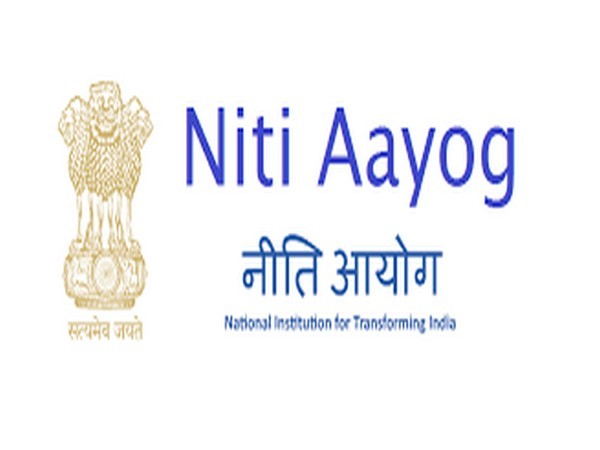NITI Aayog Launches Reports Charting India’s Inclusive Services Growth
This report examines how the services sector—which contributes nearly 55% of India’s Gross Value Added (GVA) in FY 2024–25—is evolving at both the national and sub-national levels.

- Country:
- India
In a significant stride toward shaping India's economic future, Shri B.V.R. Subrahmanyam, CEO of NITI Aayog, unveiled two inaugural reports under the Services Thematic Series during a high-level event attended by senior government officials, industry leaders, and academia. Present on the occasion were Dr. Arvind Virmani, Member of NITI Aayog, and Dr. V. Anantha Nageswaran, Chief Economic Adviser to the Government of India.
These pioneering studies offer the first in-depth, multi-dimensional macroeconomic assessments of India's services sector, analyzing both output and employment dynamics with a strong focus on state-level performance, regional inclusivity, and policy pathways to catalyze sustained services-led development.
Report 1: "India's Services Sector: Insights from GVA Trends and State-Level Dynamics"
This report examines how the services sector—which contributes nearly 55% of India's Gross Value Added (GVA) in FY 2024–25—is evolving at both the national and sub-national levels. It provides a clear and nuanced view of how services-led growth is becoming more spatially balanced, with lagging states beginning to catch up with traditionally dominant ones.
Key Findings:
-
Structural convergence is underway, as states with historically lower services sector shares are showing signs of catching up with more advanced counterparts.
-
Inter-state disparities in services contributions to GVA have widened slightly, but not significantly enough to undermine the convergence trend.
-
Urbanization, digital expansion, and logistics improvements are positively impacting regional service economies.
Recommendations:
To deepen the momentum, the report outlines several strategic focus areas:
-
Invest in digital and physical infrastructure to foster innovation and ease of doing business.
-
Develop tailored service growth strategies for states, aligned with their unique socio-economic and industrial strengths.
-
Enhance institutional capacity to plan and regulate service ecosystems.
-
Integrate services with industrial hubs, ensuring value chain linkages.
-
Support urban and regional service clusters to boost competitiveness and employment.
Report 2: "India's Services Sector: Insights from Employment Trends and State-Level Dynamics"
This report delves into the employment landscape of India's services sector, offering insights into job patterns across sub-sectors, gender, location, education, and occupational profiles.
Key Observations:
-
The sector reflects a dual character:
-
Modern, high-productivity segments (such as finance, IT, and professional services) are globally competitive but limited in job creation.
-
Traditional segments (like retail, tourism, and personal services) are labor-intensive but mostly informal and low-paying.
-
-
Job quality is not keeping pace with output growth, especially in rural and semi-urban regions.
-
Gender disparities persist, with female participation concentrated in low-paying or informal jobs.
-
Post-pandemic recovery has been largely led by services, but informal and unprotected employment still dominates.
Employment Roadmap:
To address these challenges, the report recommends a four-part strategic framework:
-
Promote formalisation and provide social protection to gig workers, self-employed individuals, and MSME employees.
-
Expand access to skilling and digital infrastructure, particularly targeting rural youth and women.
-
Invest in emerging sectors and green economy capabilities, preparing the workforce for future demand.
-
Foster balanced regional employment through the development of Tier-2 and Tier-3 service hubs.
The Broader Vision: Services Sector as a Growth and Inclusion Engine
Together, these reports make a compelling case for recognizing the services sector as the key to India's employment and output transformation. Beyond its contribution to GDP, the sector is pivotal to realizing the Viksit Bharat @ 2047 vision—a blueprint for an advanced, inclusive, and sustainable India by the centenary of independence.
The studies urge policymakers and industry leaders to adopt a holistic approach that aligns services development with:
-
Skilled workforce expansion
-
Digital and physical infrastructure upgrades
-
Integration into global value chains
-
Targeted state-level policy innovation
By doing so, India can unlock the next wave of broad-based, services-led growth—one that generates high-quality employment, reduces regional inequalities, and secures its position as a global services powerhouse.
Industry and Government Collaboration Vital
These reports provide a framework for actionable strategies at both national and sub-national levels. They highlight the need for:
-
State governments to adopt customized service development plans
-
Industry associations to align business models with inclusive employment practices
-
Academic and training institutions to build a workforce equipped for the changing nature of services
As India transitions into a knowledge- and service-based economy, these reports serve as both a diagnostic and a roadmap, offering data-driven insights and policy prescriptions to guide its future.
ALSO READ
-
India's Services Sector: Navigating Growth with Challenges
-
India's Services Sector: A Powerhouse in Job Creation and Economic Growth
-
IFCCI and NITI Aayog’s AIM Forge Partnership to Boost STEM and Innovation in India
-
WRAPUP 1-US services sector growth brakes; prices paid measure edges higher
-
U.S. Services Sector Stagnation: Tariffs and Labor Market Woes









